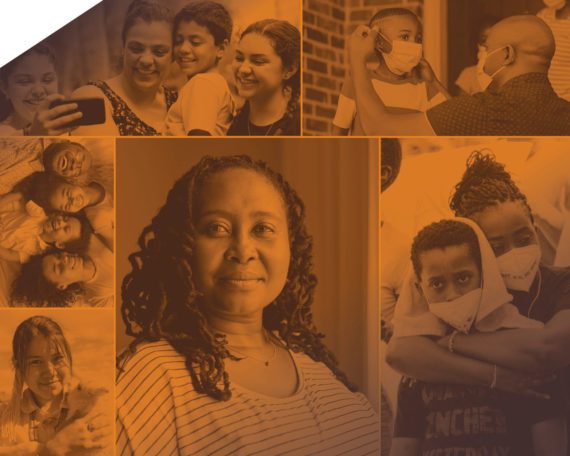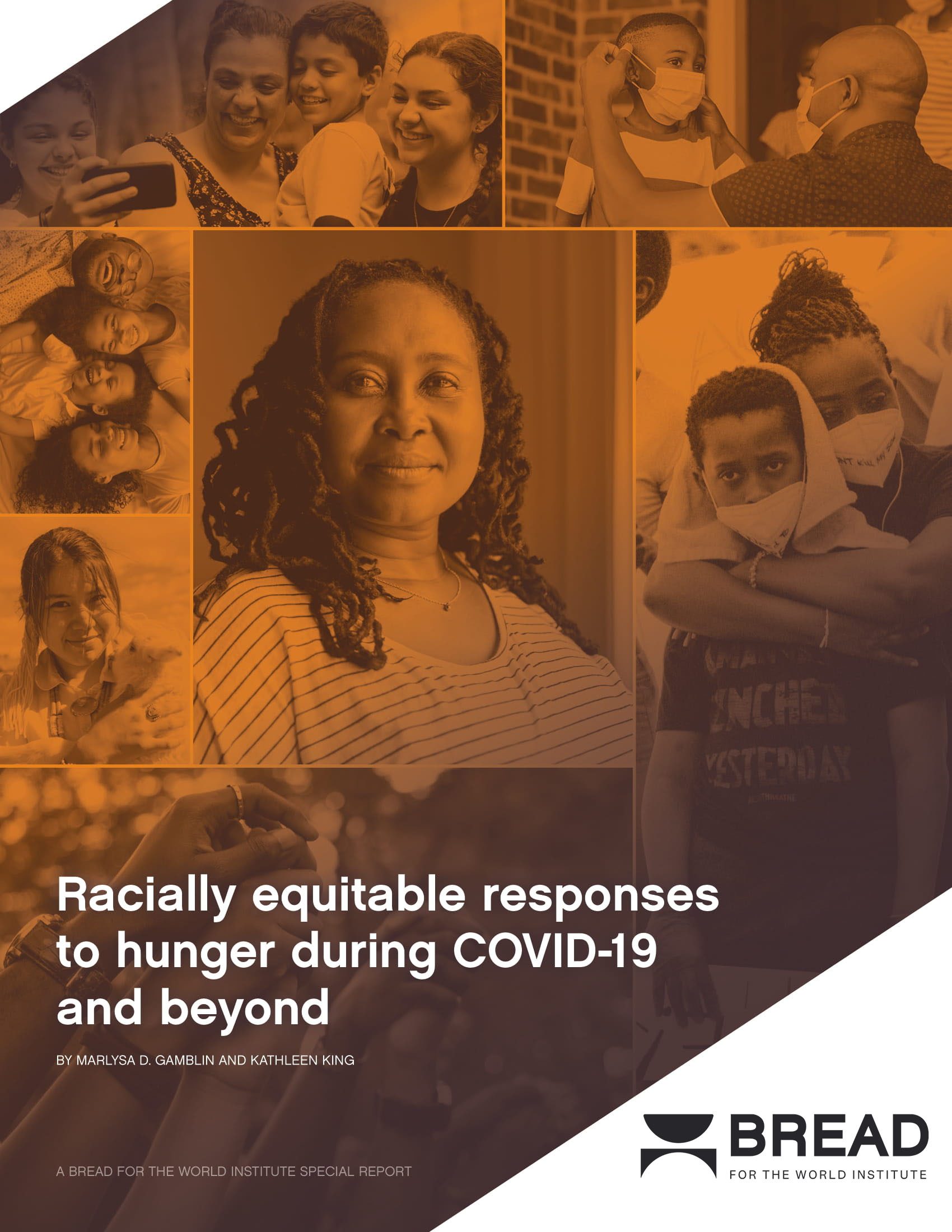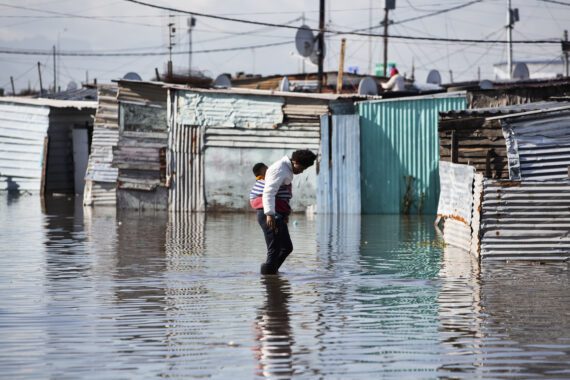Special Report
Applying a Racial Equity Lens to End Hunger
Racial inequity is a root cause of hunger
Ending hunger in a lasting, sustainable way requires identifying and resolving its root causes. While hunger and poverty rates have declined nationwide, people of color consistently have far higher rates of hunger and poverty than whites. This is due, in large part, to the impacts of structural racism.
Applying a racial equity lens—a concept and practice that focuses on achieving equality for people of color—can help respond to structural racism and its consequences. This will not only reduce hunger and poverty among communities of color, but also move the United States closer to its national goal of ending hunger by 2030.
Applying Racial Equity to U.S. Federal Nutrition Assistance Programs provides first-ever analysis to identify ways key nutrition programs can apply racial equity principles so that people of color are no longer disproportionately food insecure and no longer disproportionately at risk of food insecurity.
The report also provides a detailed glossary of terms related to racial equity, historical accounts of structural racism, and spotlights of how various community members are already applying this lens effectively.
Racial Equity and COVID-19
The COVID-19 Pandemic has had negative impacts on everyone, but communities of color have been among the communities that have experienced the most impacts by the pandemic. This is because of unresolved systemic racism that has created racial inequities.
Before the COVID-19 pandemic, food insecurity affected communities of color at far higher rates. In the months since the pandemic began, preliminary findings from the Urban Institute show that Latino/a and Black households are more than twice as likely to report being food insecure as white households—27.1 percent and 27 percent, respectively, compared to 13.5 percent for white households.
Not long after COVID-19 arrived in the United States, it became clear to all that race played a major role in determining how likely people are to contract the virus and how likely they are to die if they get sick. Thus far, Black communities have had the highest COVID-19 death rate of any racial or ethnic group, followed by Indigenous people. This finding is consistent whether the data is at the county, state, or national level. According to the Color of Coronavirus Project, the death rates per 100,000 people in each group are 80 Black people, 67 Indigenous people, 59 Pacific Islanders, and 46 Latino/as, compared to 36 white people.
Unfortunately, the racial divides in food insecurity, coupled with the higher rates of exposure, infection, and death from COVID-19 among Black, Indigenous, and Other People of Color, point to the urgent need for the United States to make racial equity a top priority in efforts to contain COVID-19 and its widespread impacts. “Racially Equitable Responses to COVID-19” provides a pathway for how to respond to COVID-19 and its impacts in a racially equitable way that centers the needs, leadership and power of Black, Indigenous and other People of Color.
How to achieve racial equity
Racial equity requires walking in solidarity with people of color, honoring their power and expertise, and centering their needs and leadership. These tenants should be practiced to identify targeted responses that should be proportionate to the structural racism, historical trauma, and current racial discrimination that each community of color has experienced.
Creating racially equitable opportunities will lead to equal outcomes among people of color in the United States. People of color will be no more likely to experience hunger or poverty than whites. Ultimately, achieving racial equity will result in all U.S. residents will have optimal nutrition and health outcomes, regardless of race or ethnicity.
To understand how U.S. policies established structures of racial inequity that make people of color more likely to experience hunger and to learn more about the causes of today’s racial hunger, income, and wealth divides, please participate in the Racial Wealth Gap Learning Simulation (also available in Spanish). Dismantling these structures and applying a racial equity lens to current and future policies will move our country closer to racial equity.
How to apply a racial equity lens to anti-hunger policies and programs
Bread for the World Institute developed these tools for other organizations, policymakers, and implementing agencies to use in applying a racial equity lens in their work, whether inside or outside the anti-hunger and anti-poverty fields. Our hope is to build on these tools for future projects.
The Racial Equity Methodology offers organizations, policymakers, and implementing agencies a possible pathway to use in developing a racial equity lens for their work, whether inside or outside the nutrition field. To ensure that the methodology contributed to equal outcomes among communities of color, it put the needs and leadership of communities of color at the center.
Review the methodology in the full report for more information on the five stages used to apply a racial equity lens, including a detailed list of questions that were asked within each stage.
The five stages used to apply a racial equity lens are:
- Do not assume the program or policy did not already apply an equity lens.
- Analyze the outcomes of each racial and ethnic groups.
- Analyze why and how the outcomes of each racial and ethnic group were different.
- Ensure experts of color are engaged equitably in leading the project, shaping the narrative.
- Consult with people doing this work.
Policies and programs we have applied a racial equity lens to
Ending hunger requires a holistic, comprehensive approach to all policies that support or detract from an individual or household’s ability to become financially secure for the present and future. This includes policies and programs within and outside the field of nutrition. Some examples of key topics outside nutrition are labor, criminal justice, immigration, housing, and health care. Below is a working list of policies and programs Bread for the World Institute has applied a racial equity lens.
Racial Equity Scorecard for Policy and Programs
The Racial Equity Scorecard is a way of assessing how successfully a given policy/program or legislation applies a racial equity lens. The policy can be scored on a scale of 0 (“harmful policy” capable of widening racial inequities) to 5 (“racially equitable” in each aspect).
Many broad-based policies could be made more racially equitable by (1) applying this practice to evaluate each part of the policy; and (2) basing recommendations on analysis of how best to address the deep origins of racial discrimination and historical trauma.
SNAP—The Supplemental Nutrition Assistance Program
Recommendations include: (1) Increase SNAP participants’ access to healthy foods, to include solutions to eliminate food deserts, a reality communities of color are more likely to experience; (2) Increase monthly SNAP benefits and target households with the fewest assets since households of color suffer the most from the racial wealth divide; (3) Strengthen options that make it easier for participants to access SNAP, such as online, phone, and in-person methods of applying for benefits and recertifying for continued participation; (4) Support efforts to ensure SNAP employees racially and ethnically reflect the the communities they serve.
WIC—The Special Supplemental Nutrition Program for Women, Infants, and Children
Recommendations include: (1) Increase funding for targeted support to initiatives aimed at eliminating racial disparities in health outcomes; (2) Increase funding for targeted, culturally appropriate support to efforts to reduce maternal/infant mortality among women and infants of color; (3) Undertake baseline assessments and provide training to increase the cultural humility, cultural competence, and accountability of frontline WIC staff; and (4) Create and implement a process that enables current and former WIC recipients to participate in program design, implementation, and evaluation.
Recommendations include: (1) Identify and implement ways for school meals to help reduce nutritional deficiencies that are more common among children of color; (2) Expand the Fresh Fruit and Vegetable Program to all schools in high-poverty areas, including middle and high schools (3) Increase financial support to schools and summer meal sites in areas of concentrated poverty to fund kitchen equipment, kitchen staffing costs, and initial summer start-up fees and (4) Provide training for school staff on culturally sensitive and competent approaches to address the nutritional deficiencies that students of color face at higher rates.
Racial Equity, Climate and Hunger in African American Communities
Due to systemic anti-Black racism, African Americans face the widest racial wealth divide relative to their white counterparts, have been forced to live in areas of racialized concentrated poverty at higher rates, experience racial health divides, and lack sovereignty to make decisions about their own communities. Promoting racial equity in climate responses would mean that African Americans directly impacted would (1) co-design and lead the climate responses in the planning, implementation, and evaluation phases, and (2) co-develop the strategies needed to eliminate the racial wealth, health and poverty divides which increase the susceptibility of African Americans to experience hunger from a climate shock. Read the one-pager for more analysis and recommendations for how to promote racial equity in climate responses!
Racial Equity, Climate and Hunger in Indigenous Communities
Due to systemic racism, Indigenous communities face a wide racial wealth divide relative to their white counterparts, have been forced to live in areas of racialized and isolated concentrated poverty at higher rates, experience racial health divides, and face limited sovereignty by the U.S. government to make decisions about their own communities. Promoting racial equity in climate responses would mean that Indigenous communities directly impacted would (1) co-design and lead the climate responses in the planning, implementation, and evaluation phases, and (2) co-develop the strategies needed to eliminate the racial wealth, health and poverty divides which increase the susceptibility of Indigenous communities to experience hunger from a climate shock. Read the one-pager for more analysis and recommendations for how to promote racial equity in climate responses!
Racial Equity, Climate and Hunger in Latino/a Communities
Due to systemic racism, Latino/as face a racial wealth divide relative to their white counterparts, have been forced to live in areas of racialized concentrated poverty at higher rates, experience racial health divides, and lack sovereignty to make decisions about their own communities in the mainland and in the context of Puerto Rico. Promoting racial equity in climate responses would mean that all Latino/as directly impacted, including those who are recognized as being undocumented, would (1) co-design and lead the climate responses in the planning, implementation, and evaluation phases, and (2) co-develop the strategies needed to eliminate the racial wealth, health and poverty divides which increase the susceptibility Latino/as face to experience hunger from a climate shock. Read the one-pager for more analysis and recommendations for how to promote racial equity in climate responses!




